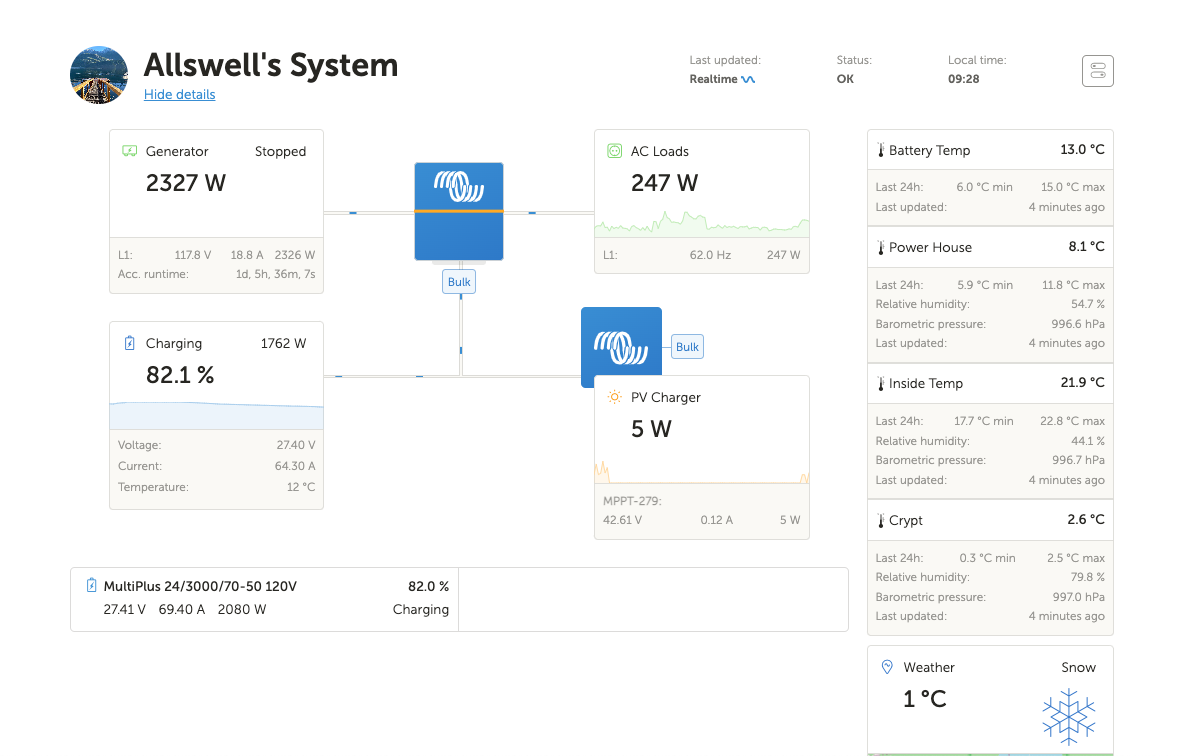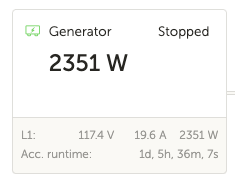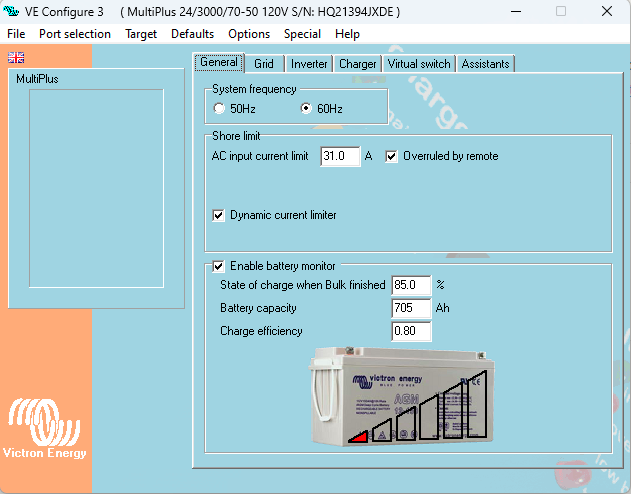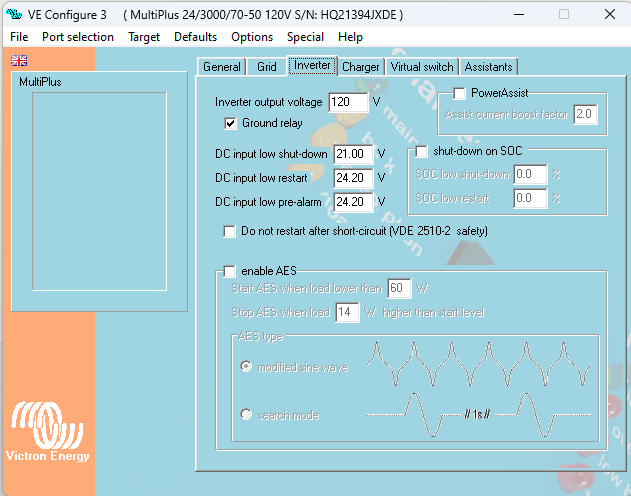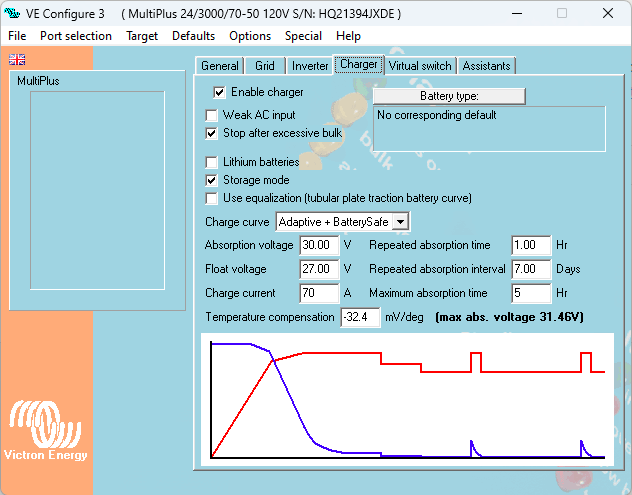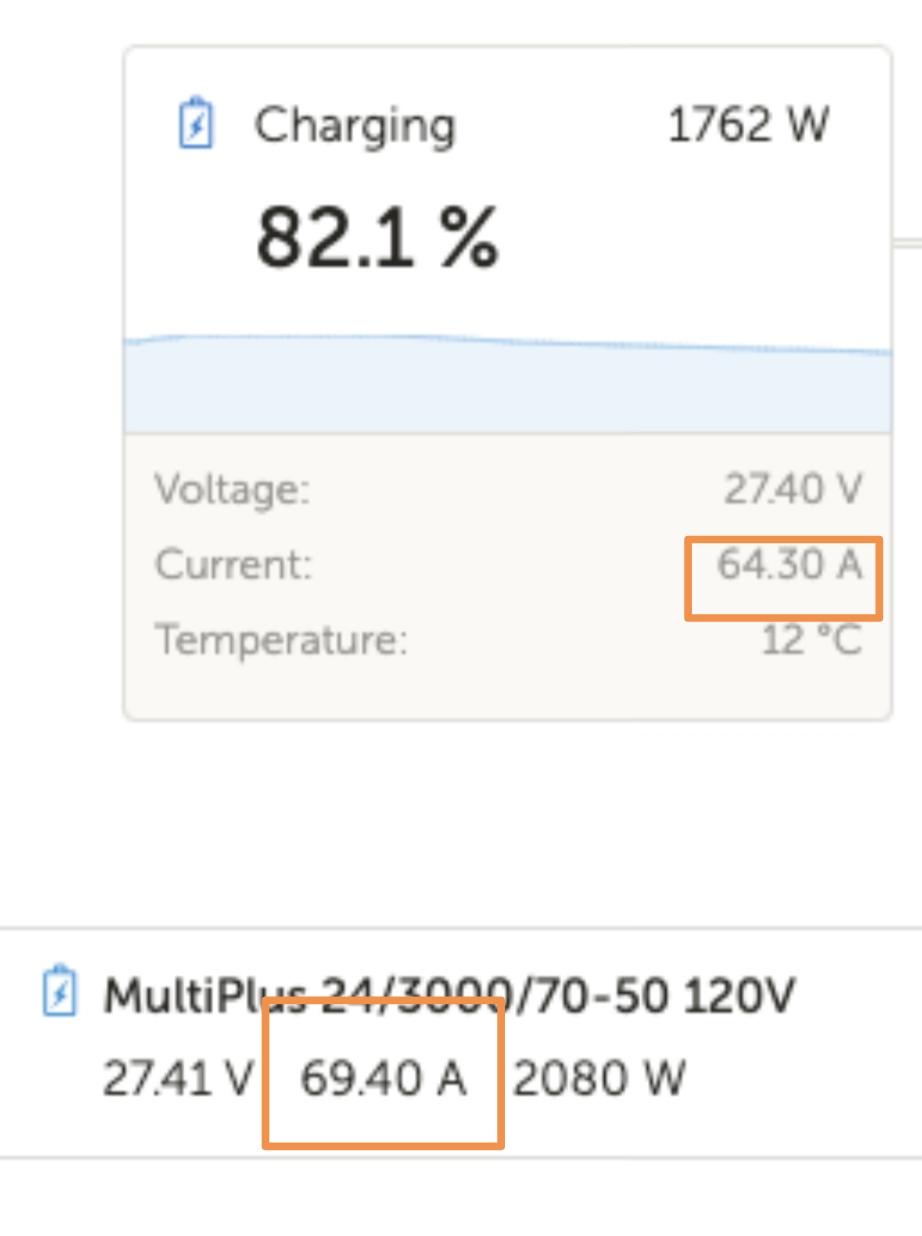I have this 9000w genset and I'm having a hard time figuring out how many amps it is able to output while charging my system. It can output 120v or 240v.
What math I'm using is this so far but it's such a big genset, it must be able to output more than 60a???
9000w - 20% inefficiency = 7200w
My multiplus 24v/3000w/70-50 is 120v so the math should be 7200w/120v = 60a output.
Is that correct?
Right now I'm charging and I can see that my system seems to only be accepting 20a from the genset while charging! What? How can I fix this so I can get more charge into my bank in less time and gas spent?
Help!
STEPS I HAVE TAKEN:
Following this document by Victron, I have:
Deactivated Power Assist in the VE.Config
Changed the AC Input Current Limit to 31a based on their equation below:
(a 5kVA generator typically provides about 4 kW
80% of 4 kW is 3200 W
3200 W / 230 V volts = 13.9 A
Set the AC Current Input Limit to 13 A)
Mine looks like 9000w - 20% as above = 7200w / 120v = 31a
But I'm not seeing anything different at all.
PS: Please ignore the "stopped" in the genset info. I don't have it set to auto start/stop yet so everytime I manually start a charge, it still reports it as stopped on the VRM.
